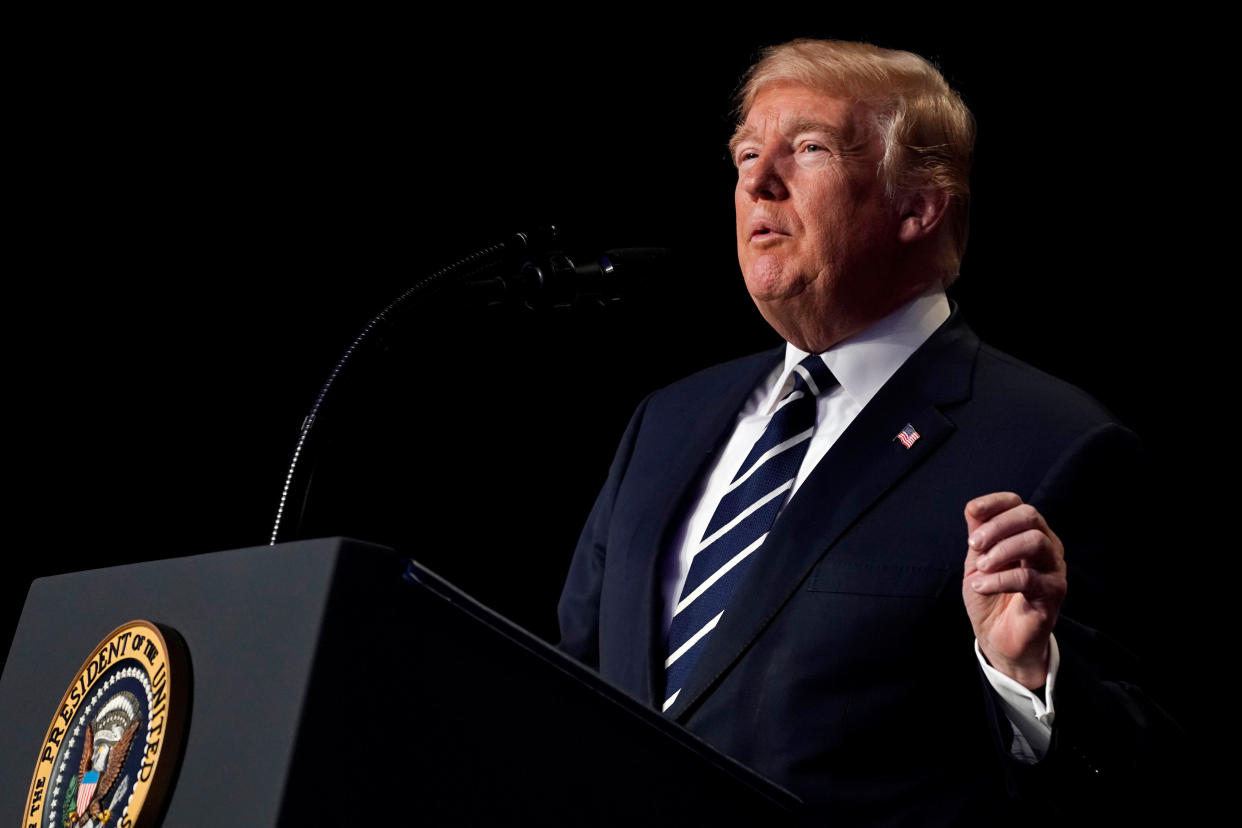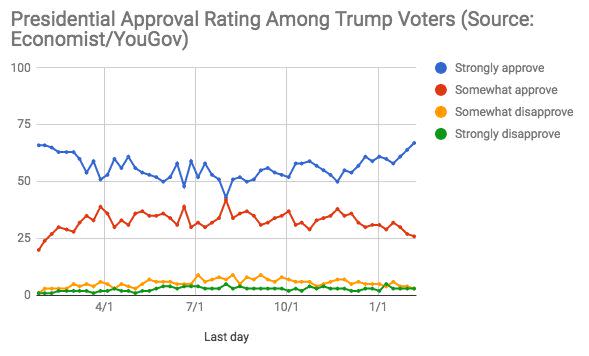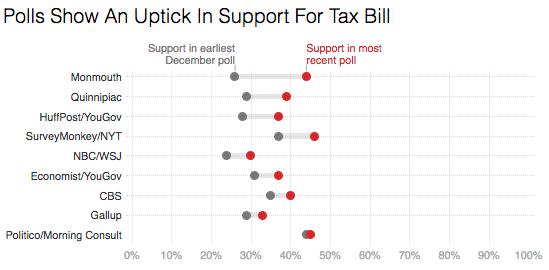President Trump Is Less Unpopular Than He's Been In A While

President Donald Trump is less unpopular than he’s been in a while, thanks in large part to a boost from his own party.
The president’s ratings stand at about 43 percent approval and 53 percent disapproval as of Thursday afternoon according to HuffPost’s aggregate of publicly available polling. That’s up from an average 38 percent approval rating at the start of December.
Trump’s ratings are still by no means good, and they continue to lag behind the numbers his recent predecessors saw at similar points in their terms. But the uptick suggests that the slow erosion in support Trump saw during his first year in office isn’t entirely inexorable.
The past year has spawned a genre of news stories endlessly reporting that Trump’s backers were still with him — a statement that, while both tautological and broadly true, obscures the fact that the president saw a small but significant weakening in his intra-party support. The latest uptick, according to several polling houses, is a sign that some of the Republicans who did abandon him over the course of 2017 have come back to him.
Recent Gallup analysis found Trump posting a record-high 90 percent approval rating among Republicans, while seeing little movement among Democrats and independents. SurveyMonkey’s polling also found Trump improving almost solely with the GOP.
And Trump’s supporters are also more enthusiastic than they’ve been in some time. When Trump first took office, 66 percent of his own voters said they strongly approved of his job performance, according to the YouGov/Economist online tracking poll. By March 2017, that number had dropped under 60 percent, where it remained for most of the year, falling as low as 43 percent in the wake of the failed effort to repeal Obamacare. But since December, Trump’s numbers have been recovering on that metric. Now, at 67 percent, they’re as strong as they’ve ever been.

Gallup notes that Trump’s rise among Republicans was “coincident” with his State of the Union address touting the strength of the economy and the passage of a tax reform bill, although they stress it’s impossible to say that’s what caused the change.
State of the Union speeches tend to be well received, because they’re disproportionately watched by people already inclined to take a friendly view of the president ― and Trump’s was no exception. A HuffPost/YouGov poll following the address found that most Trump voters who tuned in say it improved their views of his actions. Some of that response could just be his already-staunch supporters reaching for a way to affirm that they like both Trump and what he had to say. But, by foregrounding the more restrained version of the president, it also may have helped him to hold onto the uptick in support he was already seeing among his own voters after a relatively quiet holiday season.
“If this pattern feels familiar — Republicans flee when Trump is under fire, but return to the fold when the news is about anything other than Trump – that’s because it is,” Amy Walter, of The Cook Political Report, wrote in late January. “We saw this pattern play out time and again in 2016. Trump would say/do/tweet something controversial. His numbers would drop. But, as soon as Hillary or emails got back into the news and/or Trump stayed disciplined, the race would tighten up as Republicans and Republican-leaning independents came back into the GOP fold.”
Any State of the Union bounce is likely to be fleeting, especially if — or, more realistically, when — another inflammatory statement from Trump again dominates the headlines. But several other political developments offer some positive news for the president. Opinions of the tax bill, which was historically unpopular at the time of its passage, have since modestly improved, rendering it, if not yet necessarily an asset, less of a glaring liability.

Views of the economy are the best they’ve been since at least 2001, according to Quinnipiac. And although Trump’s overall numbers continue to notably underperform economic sentiments, a majority of voters now approve of Trump’s handling of the topic. For the first time, according to the poll, he’s now seen as more responsible than former President Barack Obama for the state of the economy.
Although the Russia investigation probably isn’t what the White House would prefer to be dominating headlines, it’s also a topic on which opinion has, for the most part, stubbornly cleaved to partisan lines, suggesting it’s not immediately likely to cost the president much intra-party support.
Trump’s uptick has coincided with a tightening in generic ballot polls, which ask voters’ party preference for the 2018 midterms, leaving Democrats ahead, but by a narrower margin.
“The question isn’t really whether Republican standing has improved recently. It has,” The New York Times’ Nate Cohn wrote. “The question is whether anyone should care: Is it just one of many blips and bumps along the road, or does it say something meaningful about the midterm elections? The short answer: Check back in a month.”
Love HuffPost? Become a founding member of HuffPost Plus today.
This article originally appeared on HuffPost.
